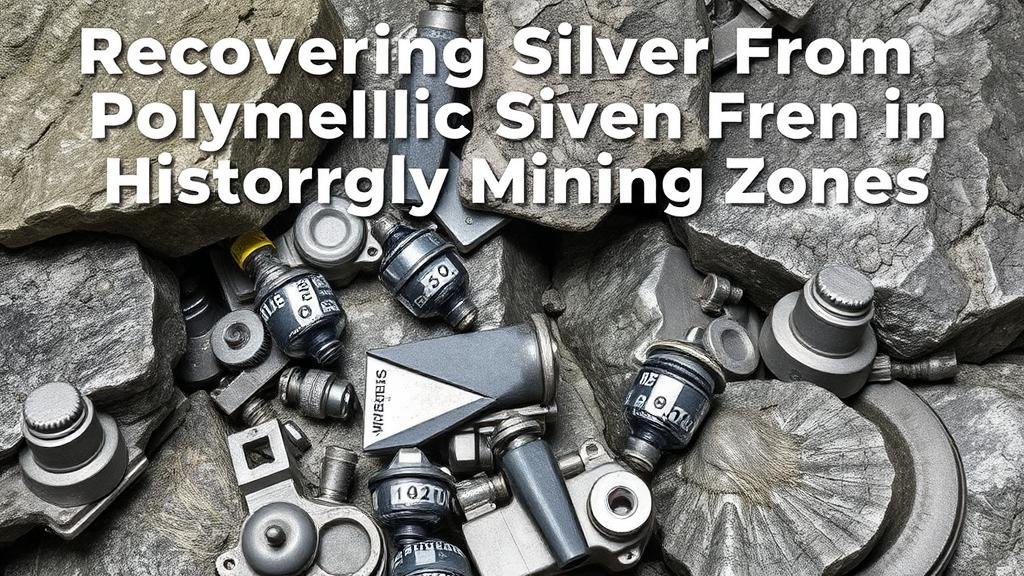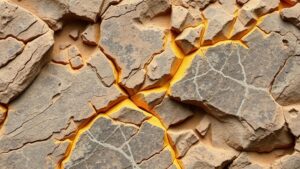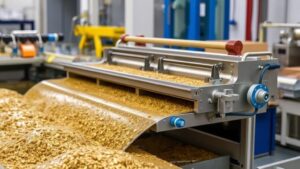Recovering Silver From Polymetallic Veins in Historical Mining Zones
Recovering Silver From Polymetallic Veins in Historical Mining Zones
The recovery of silver from polymetallic veins in historical mining zones represents both a significant opportunity and a formidable challenge. Polymetallic veins typically contain a variety of metals, including lead, zinc, copper, and silver, making the extraction process complex. This article examines the methods, techniques, and considerations in recovering silver specifically, drawing from historical precedents and modern practices.
Understanding Polymetallic Veins
Polymetallic veins are geological formations that contain multiple metallic minerals. e veins are often a result of hydrothermal processes, where mineral-rich water interacts with existing rock formations. The result can include a range of metals, typically in varying concentrations. Historical mining sites, like those found in the Silver Valley of Idaho or the Erzgebirge mountains in Germany, provide insight into how these deposits were once exploited.
Historical Context and Extraction Techniques
Historically, many mining operations focused on silver extraction using rudimentary techniques. In the 19th century, techniques such as amalgamation (using mercury) and smelting were common. Although effective at the time, these methods often led to environmental contamination and inefficient metal recovery rates.
- Amalgamation: Used mercury to extract silver, leading to high losses of valuable metals.
- Smelting: Involved heating ores to high temperatures to extract metals, but produced significant amounts of pollutants.
Today, understanding these historical methods is critical for developing improved extraction techniques that mitigate environmental impact while increasing recovery rates.
Modern Techniques for Silver Recovery
Recent advancements in metallurgy and processing techniques have transformed the recovery of silver from polymetallic veins. Today’s methodologies emphasize efficiency and sustainability. Common techniques include:
- Cyanidation: This process involves leaching silver ores with a cyanide solution, allowing for high recovery rates while being mindful of environmental practices.
- Flotation: This method separates valuable silver minerals from waste rock by introducing chemicals that attach selectively to the metals, allowing for efficient concentration.
These modern techniques can significantly improve the accuracy and sustainability of silver recovery efforts. For example, the use of cyanidation has enabled mines to achieve recovery rates upwards of 90%, a marked improvement over historical methods.
Case Studies in Recovery
Examining specific case studies provides insight into the application of modern recovery techniques. One notable example is the San Miguel Mine in Mexico. mine, which was historically active in the early 20th century, has undergone recent revitalization using modern extraction techniques. By employing flotation and cyanidation, the mine has successfully increased silver recovery rates to over 85%, significantly enhancing the economic viability of previously abandoned sites.
Environmental and Regulatory Considerations
The resurgence of interest in historical mining zones must be accompanied by a strong focus on environmental responsibility. Regulatory frameworks are in place to monitor mining activities, aiming to minimize environmental degradation and promote sustainable practices. For example, the implementation of best practices in tailings management is now a necessity to prevent toxic leaks and ensure the safety of surrounding ecosystems.
- Regulatory Compliance: Mining companies must adhere to local and international regulations to protect soil and water resources.
- Environmental Impact Assessments (EIAs): These assessments are conducted before mining projects commence, ensuring potential impacts are evaluated and mitigating strategies are planned.
Future Prospects in Silver Recovery
The future of silver recovery from polymetallic veins appears promising, especially with the continuing advancements in technology. Methods such as bioleaching, where microorganisms are used to extract metals from ores, offer environmentally friendly alternatives to traditional extraction techniques. Plus, the increasing demand for silver in industries such as electronics and renewable energy keeps the interest in recovering this precious metal alive.
Actionable Takeaways
- Invest in modern extraction technologies that enhance recovery while minimizing environmental impact.
- Engage in comprehensive environmental assessments to adhere to regulations and foster sustainable practices.
- Consider the economic viability of historical mining zones by utilizing updated recovery methods to tap into overlooked deposits.
To wrap up, recovering silver from polymetallic veins in historical mining zones combines the lessons learned from the past with cutting-edge techniques of today. By prioritizing environmental stewardship and using advanced recovery methods, stakeholders can turn legacy mining sites into sustainable sources of valuable metals.



